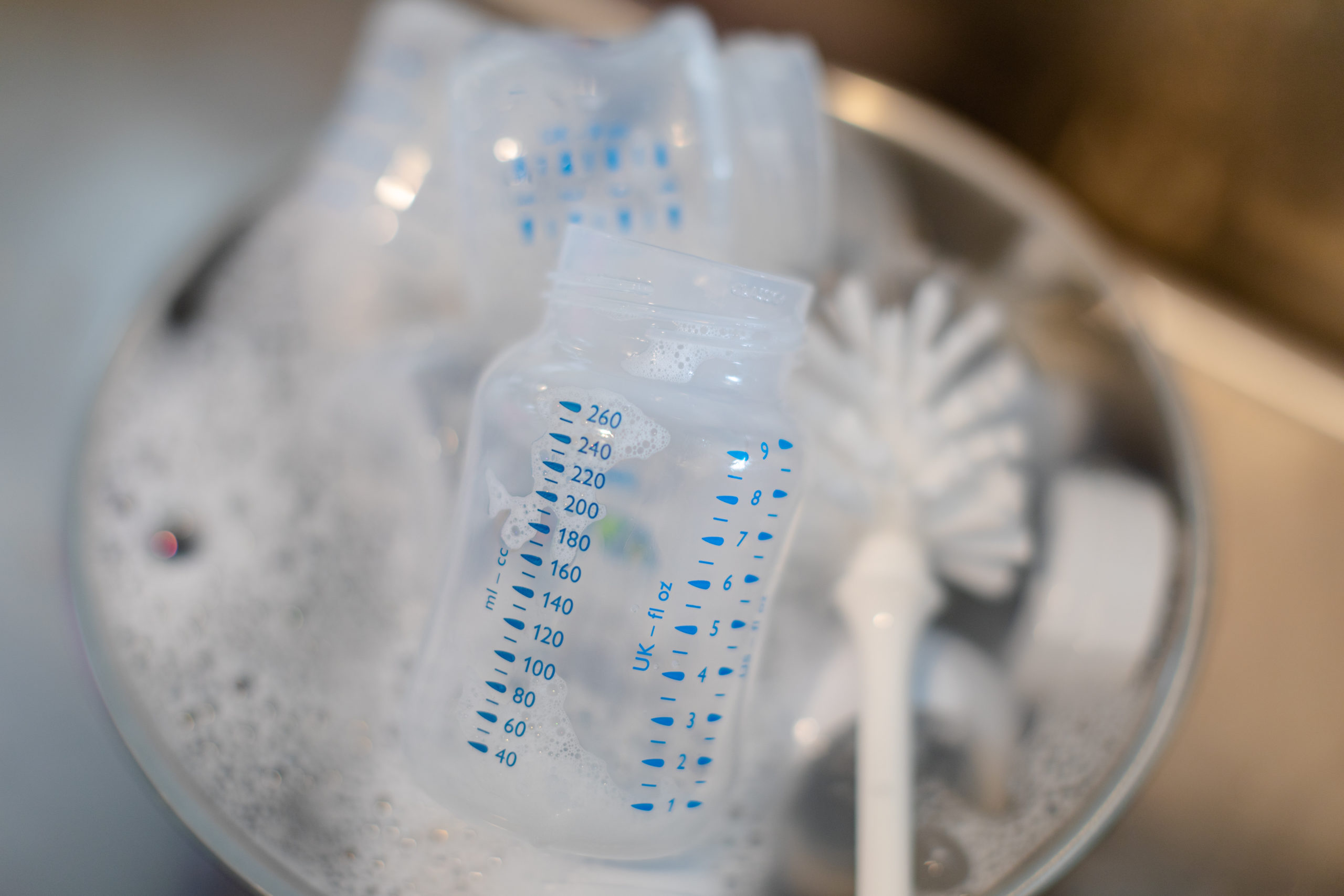What is sanitization?
Any process that reduces the number of microorganisms including viruses, bacteria, fungi, and others from surfaces or objects may be considered a sanitizing process. It should be noted that sanitizing is different from sterilization because the former eliminates the various forms of life that may be present rather than simply reducing them. The use of heat in conjunction with steam is one of the most common practices for sanitizing objects used in the extraction, delivery, and storage of foods. So how does sanitization relate to pumping and what do you need to know about it? Keep reading to find out.
What does the CDC say about sanitizing?
Pumped breast milk, like most other foods, is susceptible to the presence and growth of germs/bacteria within the milk. As a result, breast milk or residue on pump parts can provide an ideal environment for many microorganisms to thrive. The CDC recommends that you clean your pump parts after each use and that you only handle clean pump parts with clean hands that have been washed for at least 30 seconds with soap and warm water. However, they also promote sanitizing your pump parts at least once daily. According to their breast pump kit cleaning guide, “Sanitizing is especially important if your baby is less than 3 months old, was born prematurely, or has a weakened immune system due to illness or medical treatment (such as chemotherapy for cancer).” When you are sanitizing your pump parts, don’t forget the bottle brush and wash basin. Two standard methods for sanitizing are to utilize a microwave/plug-in steam system or simply boil the parts in covered pot for 5 minutes.Note: Baby’s health care provider may provide you with additional requirements for pumping breast milk safely for children born prematurely or with significant health issues including weakened immune system due to illness or medical treatment.
Can I use my dishwasher?
Believe it or not, your dishwasher can be used to sanitize pump parts from certain manufacturers. If sanitizing your parts in the dishwasher is not recommended by your pump kit manufacturer. The steps below come directly from the CDC and may be used to sanitize pump part kits that are dishwasher compatible.11. Wash. Place disassembled pump parts in dishwasher. Be sure to place small items into a closed-top basket or mesh laundry bag so they don’t end up in the dishwasher filter. If possible, run the dishwasher using hot water and a heated drying cycle (or sanitizing setting); this can help kill more germs.2. Remove from dishwasher. Wash your hands with soap and water before removing and storing cleaned items. If items are not completely dry, place items on a clean, unused dish towel or paper towel to air-dry thoroughly before storing. Do not use a dish towel to rub or pat items dry because doing so may transfer germs to the items.3. If you use a dishwasher with hot water and a heating drying cycle (or sanitizing setting) to clean infant feeding items, a separate sanitizing step is not necessary.
Favorite sanitizing Systems
Below are some of my personal favorites for breast pump kit sanitizing systems:
– Medela Bags – best for use on the go, they are disposable bags that only require a microwave and some water to sanitize your parts.
– Dr. Brown Tray – another microwave system that is a bit bulkier than the Medela bags but is reusable making it a solid choice for day-to-day use.
– Papabalic – if you are okay having your sanitizer on the counter or prefer a plug-in option for sanitizing your parts, this unit provides everything you need for everyday use.s to dry.
– Wabi – an excellent non-traditional option for pump part sanitization because it utilizes UV to remove microorganisms.
Links CDC guidehttps://www.cdc.gov/healthywater/pdf/hygiene/breast-pump-fact-sheet-p.pdf (English)https://www.cdc.gov/healthywater/pdf/hygiene/breast-pump-fact-sheet-sp-h.pdf (Spanish)https://www.cdc.gov/healthywater/hygiene/healthychildcare/infantfeeding/breastpump.html

leave a comment